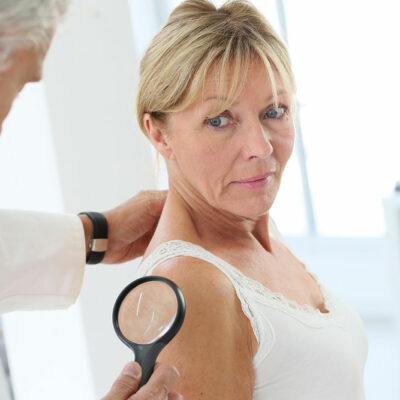Vitiligo – Early signs and management

Vitiligo is a disease that makes certain areas of the skin lose their color. These areas turn lighter than the rest of the skin, eventually becoming white. The size and number of depigmented patches can vary from one person to another. Regardless, the condition and its effects can be managed with treatment. To seek appropriate care, one must keep an eye out for early signs and explore available management options by consulting a healthcare professional.
Early signs
The most common and visible sign of vitiligo is patches of lighter skin. Over time, other effects of the condition can be observed.
1. Depigmented patches on the face
Spots and patches of lighter skin can appear anywhere on the body but often develop on the face. One might notice lighter patches of skin inside and around the mouth or nose, for instance, on the lips and chin.
2. Sensitive and itchy skin
Skin that has lost its pigment might be more sensitive to sunlight and burn quickly. Such sunburns may worsen the condition and encourage its spread. The depigmented patches may also start to itch when vitiligo is actively spreading.
3. Changes in hair
Vitiligo may also make the hair lose color, turning strands light or white. Such changes can usually be observed in strands that grow in the depigmented areas.
Management
Following an examination of symptoms, a healthcare professional will confirm the presence of vitiligo. Then, based on the type of vitiligo and the patient’s preferences, the professional may recommend various management options, including prescription-based treatment. The doctor may also recommend certain measures to reduce the spread of vitiligo and manage the condition.
- One must limit sun exposure to prevent sunburns around depigmented patches. If one must go outdoors, wearing protective clothing as well as sunscreen with SPF 30 is crucial for shielding already sensitive skin.
- Injuries can trigger vitiligo patches in those who are at risk of developing the condition. So, avoiding contact sports or other activities known to cause cuts and scrapes can help prevent symptom onset.
- When dealing with vitiligo, one must avoid tattoos, as they can damage the skin and also cause inflammation, worsening the symptoms.








